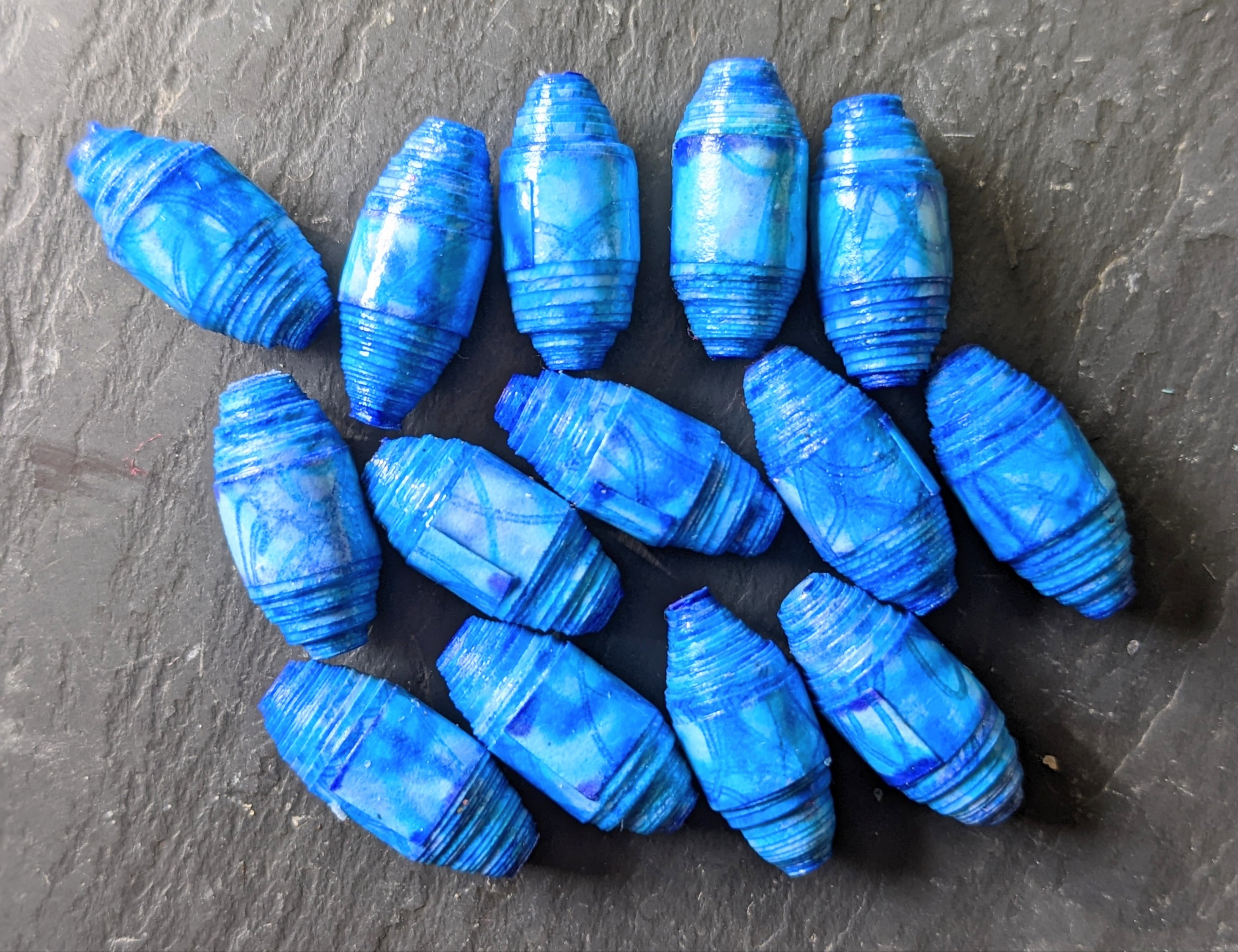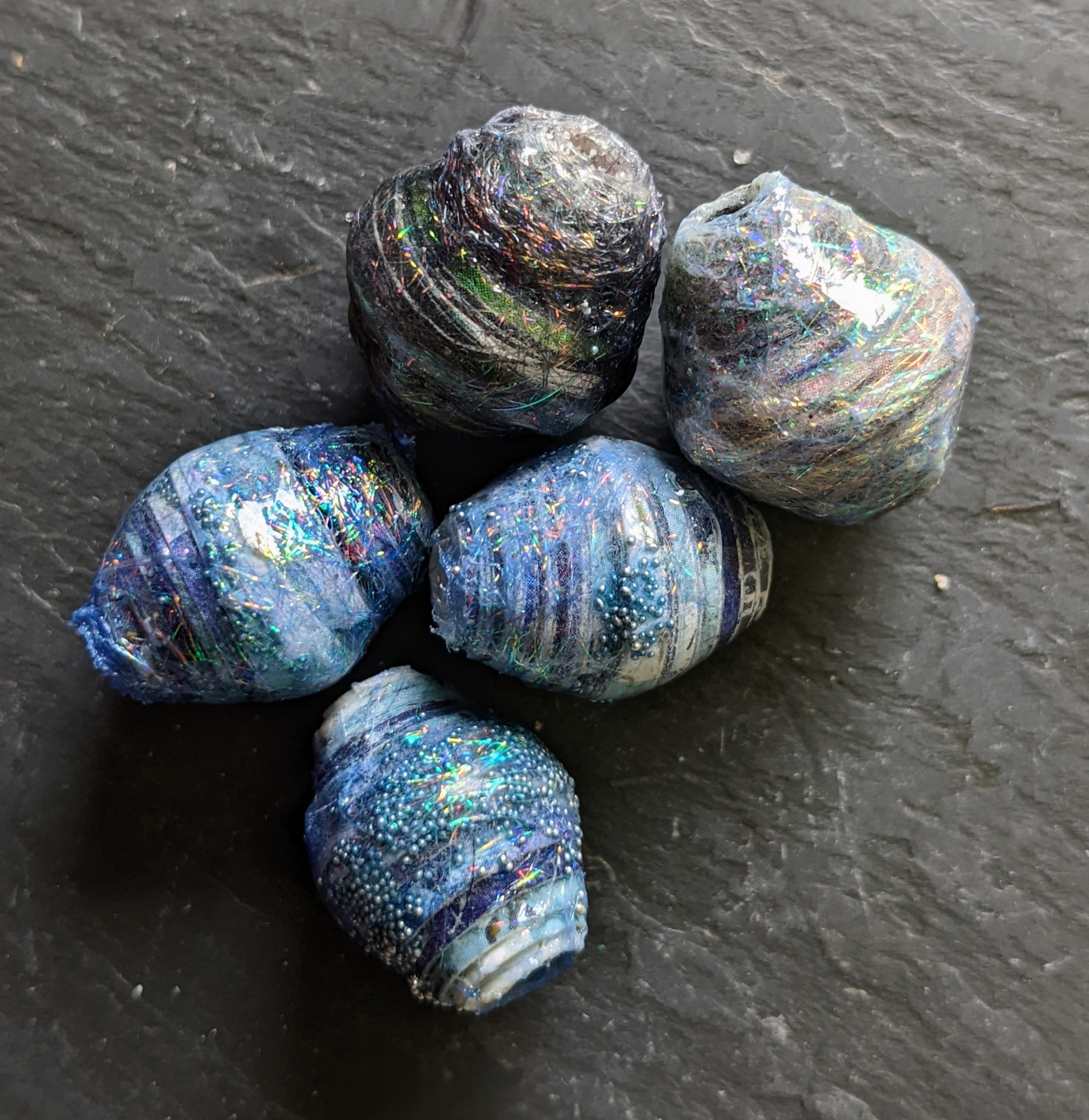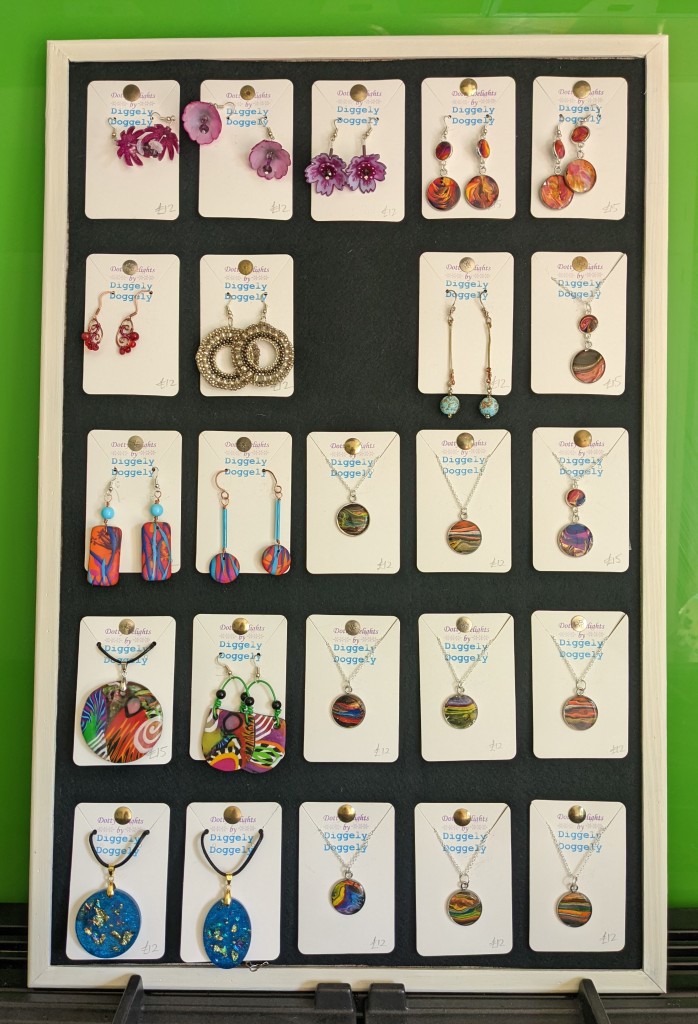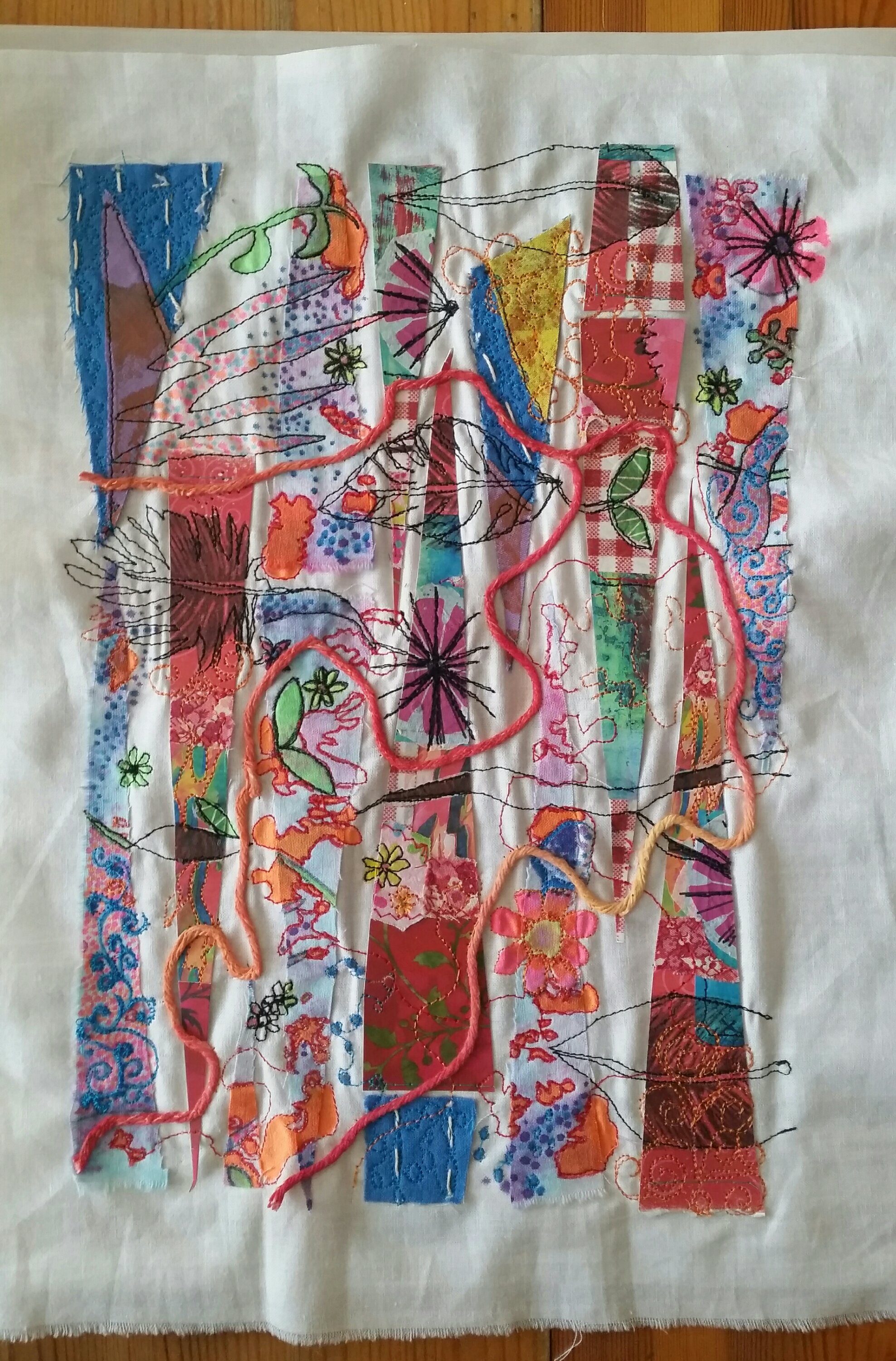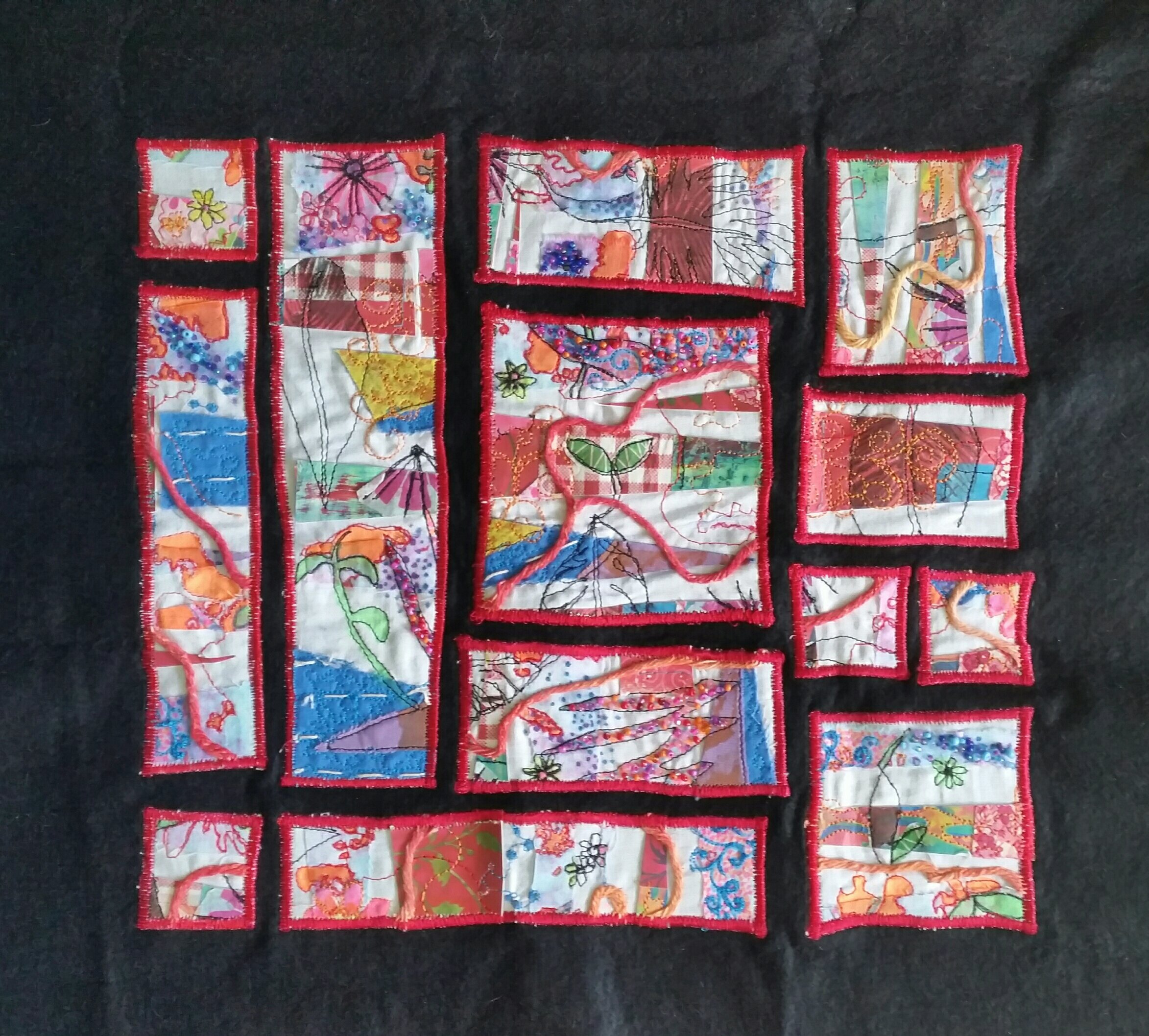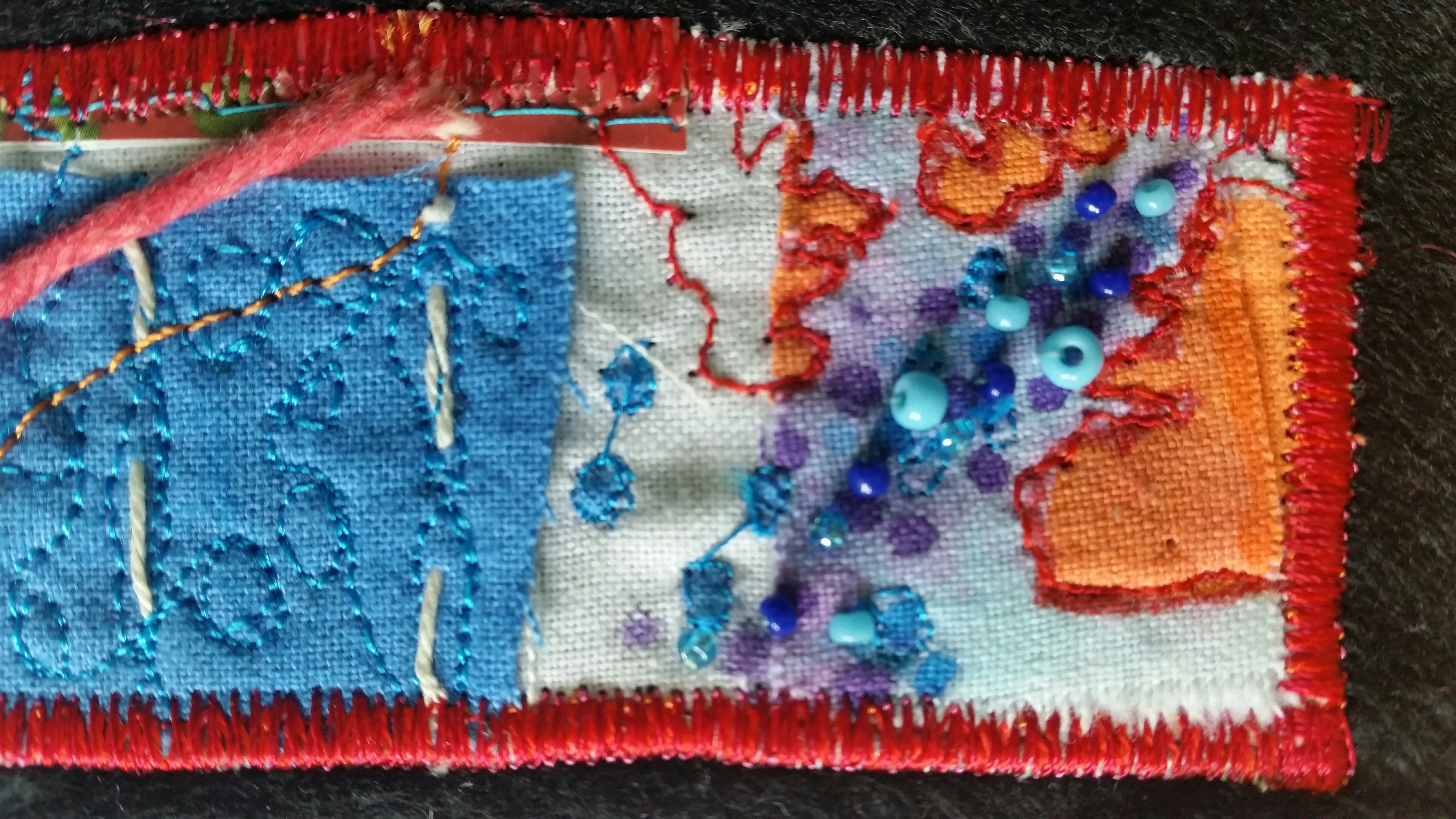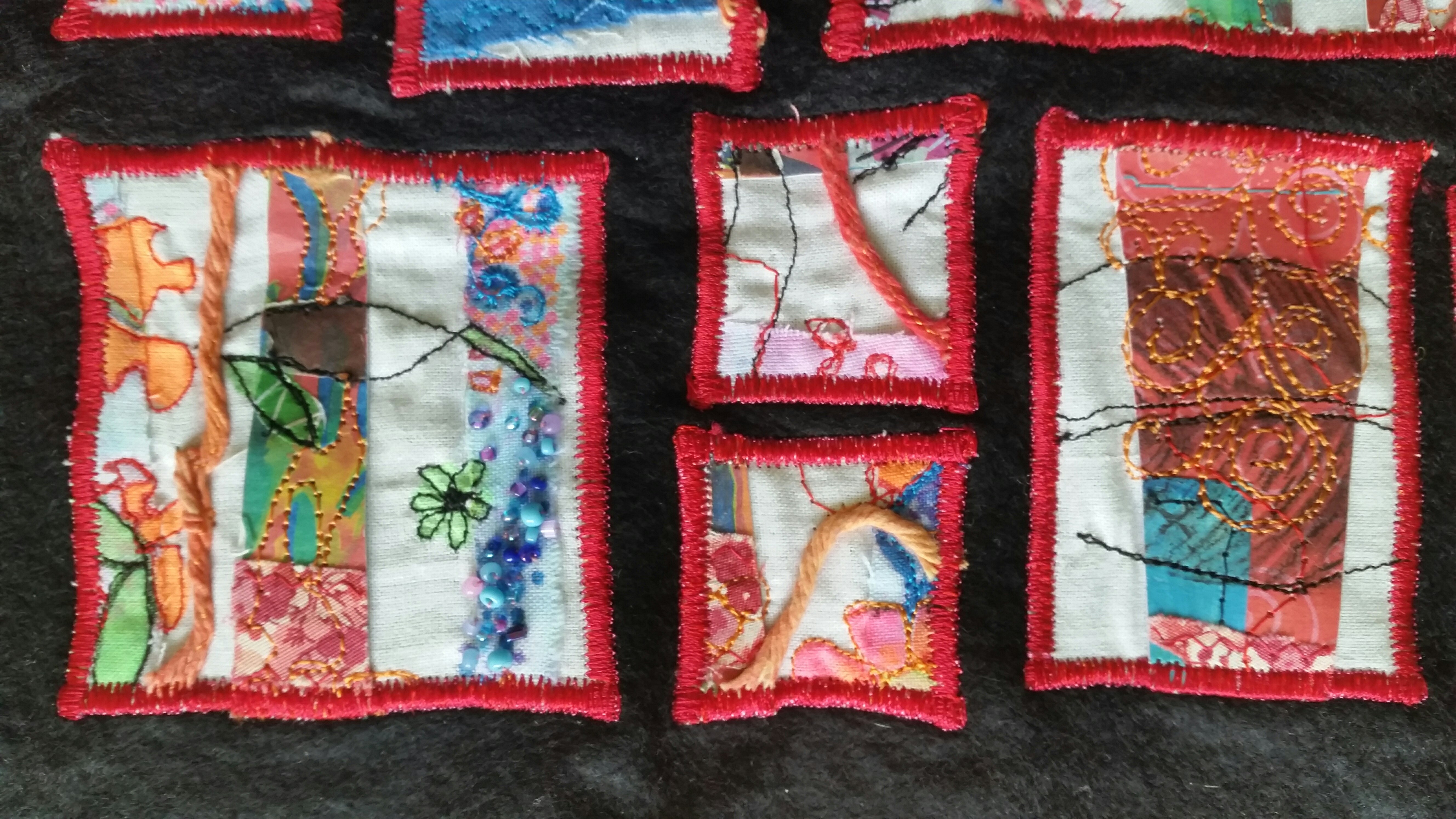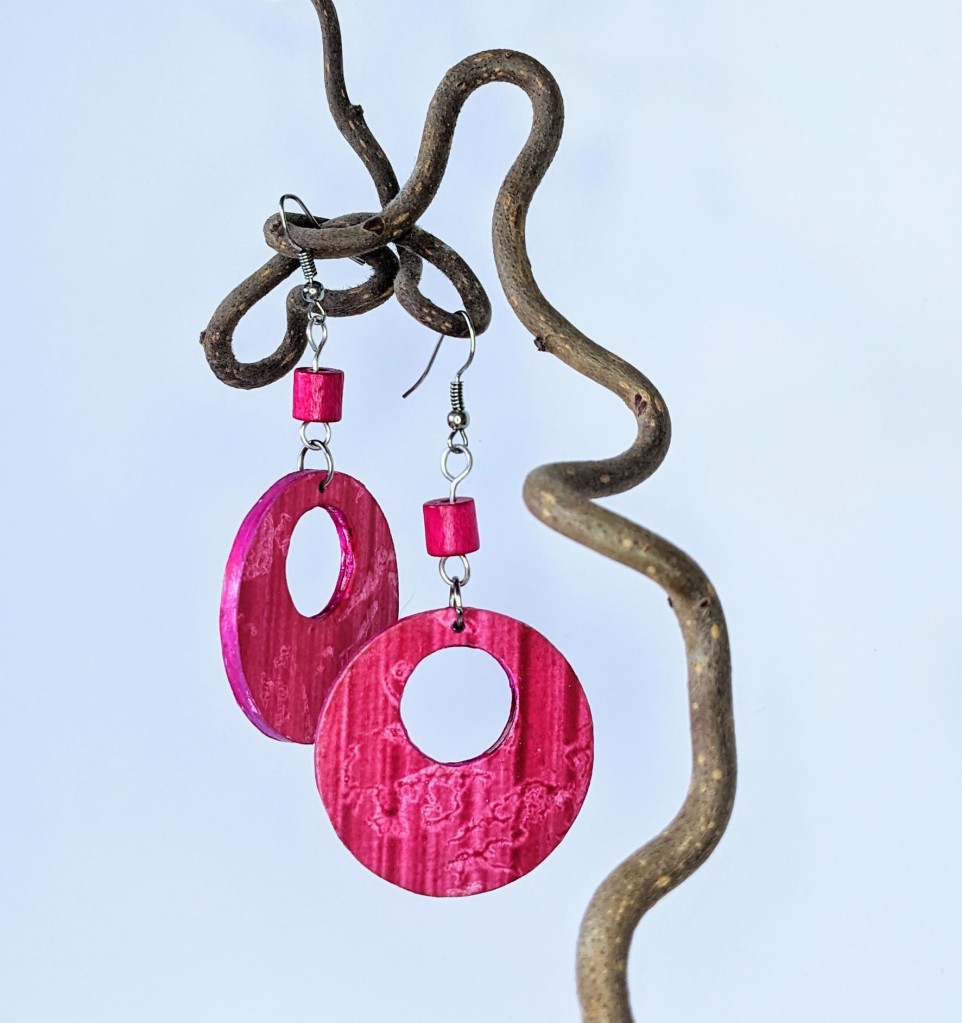
Having had great fun making lots of paste papers I decided to use some to make over a pair of earrings I was given a few years ago to suit my own taste. If you fancy having a go I’ve written a little tutorial.
Paste Paper Earring Tutorial

You will need:
- A pair of flat earrings to make over
- Pretty paper – your own painted paper or scrapbook paper
- Paper scissors
- Craft knife and cutting mat
- complementary or contrasting bead
- small amount of 20 gauge wire
- wire cutters, round nose and flat nose pliers
- PVA (or similar like Elmer’s glue) and brush to spread it
- Pencil
- Paint/Sharpie to match or contrast (optional)
- Acrylic wax, Mod Podge or varnish to seal
The first step is to take your earrings apart. Mine were wooden discs hung on ear wires. I kept the jump ring to reuse at the end. Make sure you use your flat nose pliers to bend the ring sideways rather than pulling them open, as this weakens the wire, plus it’s hard to keep the shape. I hope that makes sense.
Choose your favourite part of the paper and draw round the earring four times, then cut out, slightly outside the line. If, like me you have a hole in the middle cut it out before sticking down. You can lightly fold the middle and snip into the hole before cutting it out.
Spread PVA (or similar white glue) onto the paper and then stick it to one side of the earring. I found I could slide the paper around to position it where I liked. Do one side then leave to dry.
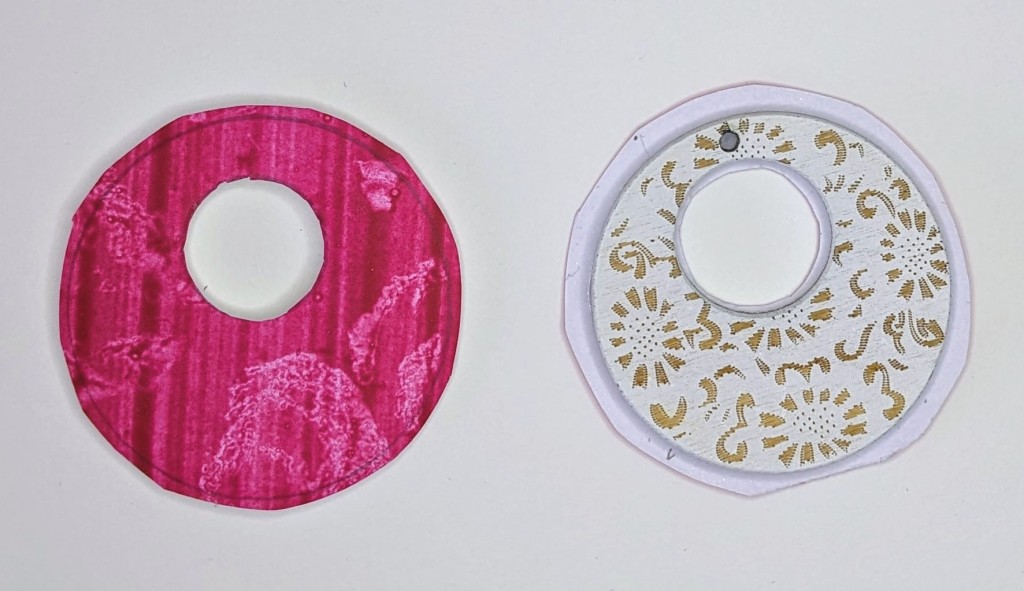
Here are my earrings with the first side glued down. Initially I planned to leave the original pattern for the back, but in the end I felt it didn’t work, as they were too different, so I covered both sides.
I also ended up colouring the white edges at the end, but if you want to do yours now is a good time. When the paper is dry use scissors or a craft knife to trim the paper close to the edge. Use a sharp point such as a needle or the point of a pair of compasses to reopen the hole. Make sure you push from the front to the back so that the edges stay smooth.

While the paper is drying take your bead and thread it onto the wire. Using your round nose pliers make a loop in the end of the wire, then cut the wire about 1cm beyond the bead and make another loop. Trim any excess wire.
Glue your second side of paper onto the back of the earrings, sliding into place. Trim again when dry and reopen the hole from the side you have just stuck down. Paint or colour your edges if you haven’t already and leave to dry.

Finally, it’s a good idea to seal your earrings to protect them as they are paper. I used Acrylic wax, which can be buffed to a soft shine, but something like Mod Podge would work, or a spray varnish – whatever you have.
The final step is to reassemble the earrings. Put the jump rings back through the holes, and add the bead, then close the ring using flat nose pliers. Then open the top loop and add your ear wires, and now you’re ready to show off your new earrings.

If you decide to have a go I’d love to see what you did.



